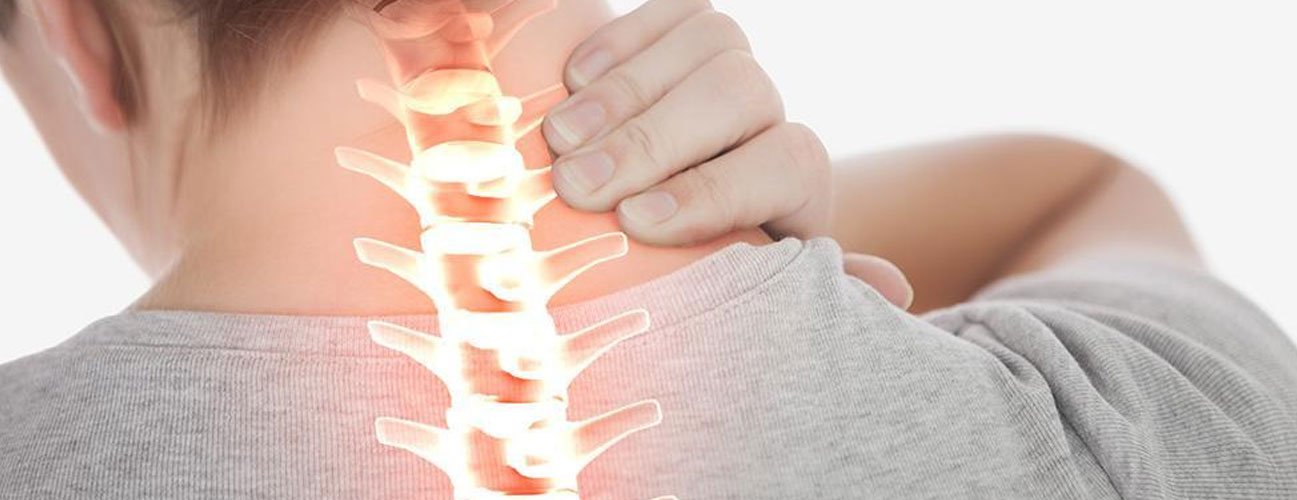Neck Pain
Neck pain is any painful sensation or discomfort experienced in your cervical spine. The neck region of your spine consists of seven bones that support and balance your head, which weighs as much as a bowling ball. The neck provides incredible range of motion to turn the head in all directions. Along with other components like joints and muscles, the cervical spine supplies strength and stability, allowing the exiting nerves traveling to your extremities from the spinal cord to communicate with the brain.
What Causes Neck Pain?
Many neck-related issues can cause cervical spine pain. Most neck pain occurs as people live their lives normally, unaware of how certain activities put a strain on their neck. Slouching, sleeping with the neck twisted or certain activities like painting ceilings are all factors that can cause the neck joints to swell or put a strain on the neck muscles.
Neck pain can be caused by various factors, including:
- Muscle Strain: Overuse or improper use of neck muscles, such as poor posture, sitting at a desk for long periods, or holding the neck in an awkward position, can lead to muscle strain and neck pain.
- Herniated Disc: Similar to low back pain, a herniated or bulging disc in the cervical spine can put pressure on nerves, resulting in neck pain. This may also lead to radiating pain or numbness down the arms.
- Degenerative Disc Disease: Over time, the cervical discs can degenerate, causing pain, stiffness, and reduced mobility in the neck.
- Osteoarthritis: Arthritis can affect the facet joints in the cervical spine, leading to inflammation and pain.
- Cervical Spinal Stenosis: This condition occurs when the spinal canal narrows in the neck, potentially causing pressure on the spinal cord or nerves, leading to neck pain and sometimes neurological symptoms.
- Strain from Poor Ergonomics: Activities that strain the neck, such as using a computer or smartphone for extended periods with poor posture, can contribute to neck pain.
- Injuries: Trauma, such as whiplash from a car accident or a sports injury, can cause acute neck pain.
The treatment for neck pain depends on its underlying cause and severity. Common treatment options include:
- Rest and Activity Modification: Avoiding activities that worsen the pain and maintaining good posture can help alleviate mild neck pain.
- Physical Therapy: A physical therapist can provide exercises and stretches to improve neck strength and flexibility.
- Pain Medications: Over-the-counter or prescription medications may be recommended to manage pain and reduce inflammation.
- Heat or Cold Therapy: Applying heat or cold packs to the affected area can provide relief.
- Surgery: Surgical intervention is typically reserved for severe cases or when conservative treatments are ineffective. Procedures may include removing a herniated disc or addressing spinal stenosis.
Common Neck Pain Symptoms
Neck pain can manifest in a number of ways and is often exacerbated by turning your head or moving your neck.
Cervical spine pain can be described as:
- Dull ache
- Sharp, stabbing pain localized in one area
- Soreness
- Tenderness
- Pulsations
Neck pain can also be associated with other symptoms, such as:
- Limited range of motion
- Tingling, numbness or pain in your shoulders, arms and hands
- Difficulty swallowing
- Swollen lymph nodes
- Upper or lower back pain

